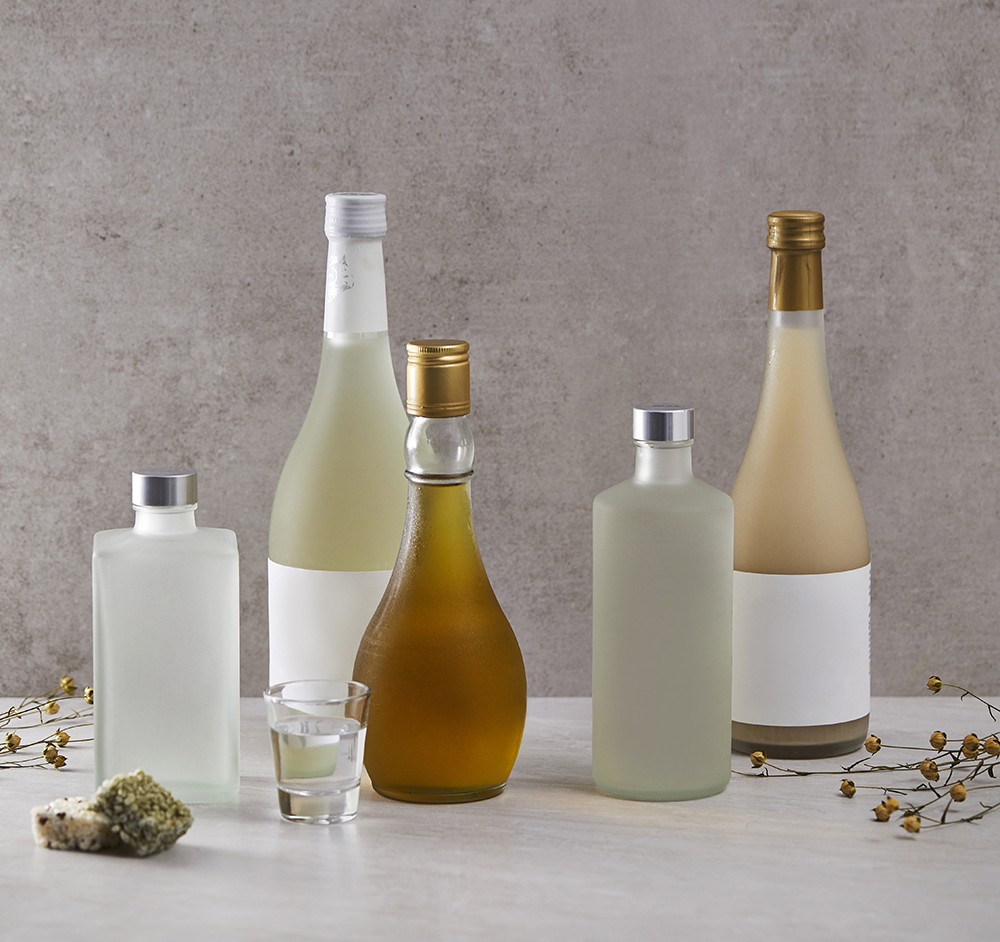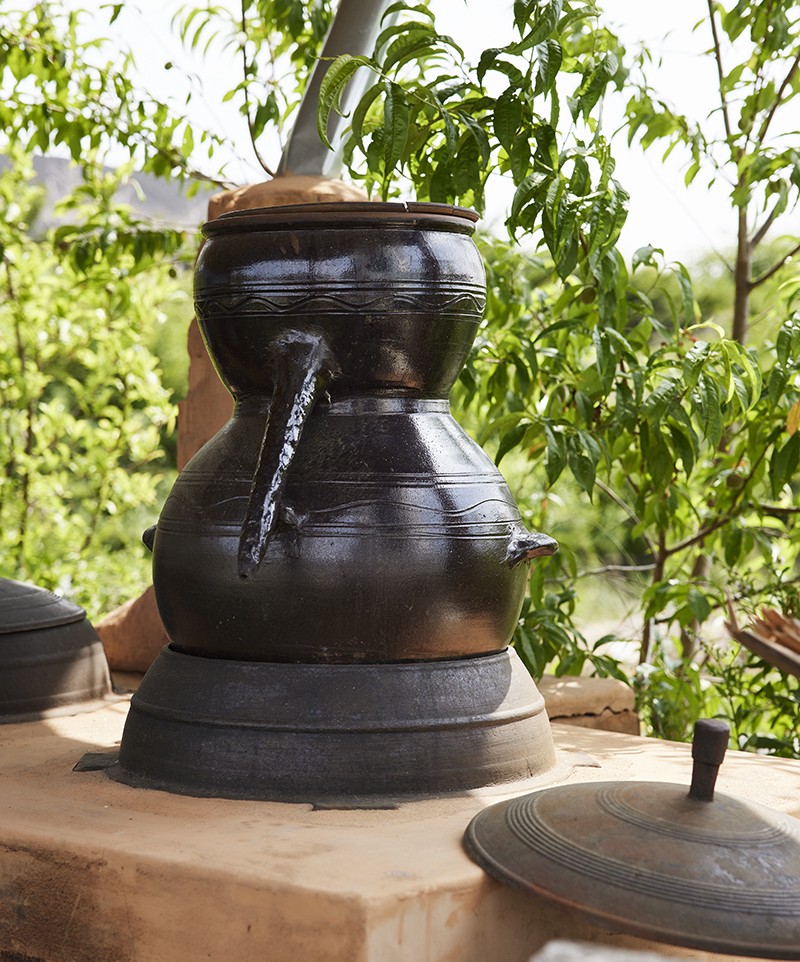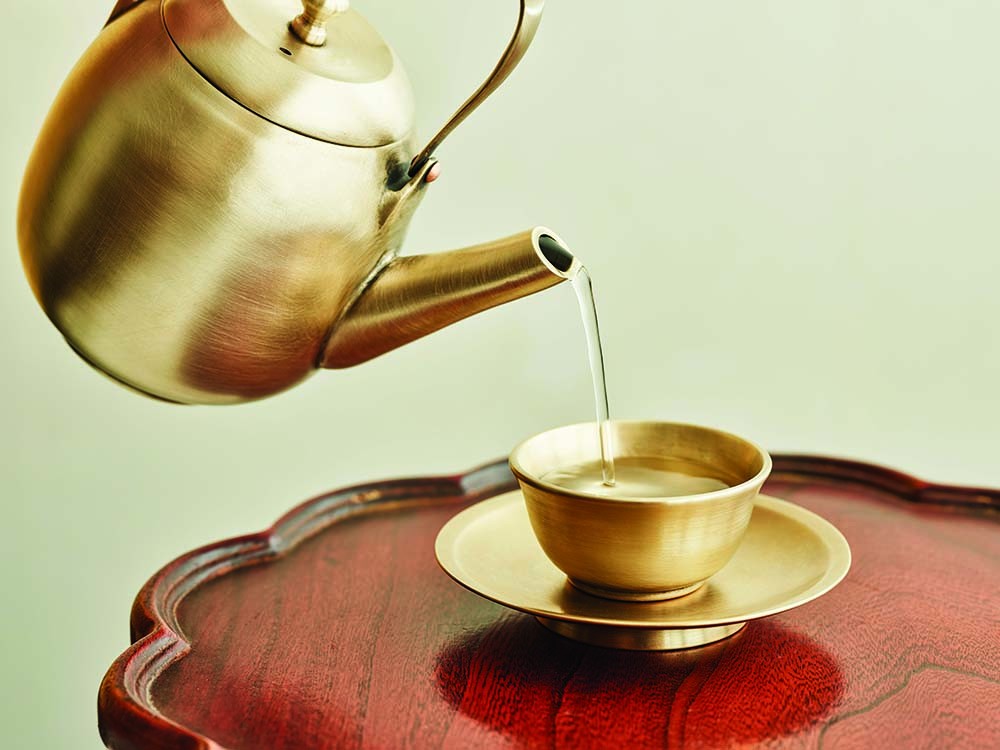한식 읽기 좋은 날
Vol 52. Soil, the Foundation of HANSIK
The Fascinating Culture of Distilled Soju
Captivated by HANSIK
Today, when asked to name a Korean liquor, most people think of (distilled) soju in green bottles. Distilled soju was a “people’s drink” for many years because it is affordable and can be purchased virtually anywhere. Recently, however, consumers have begun seeking something else: distilled soju, which is pricier but offers a wide range of flavors and aromas. Korea’s distilled soju is now seeking to be not only higher-end but also available to a global consumer base.
Article Noh Yunyoung (Editorial Team) Sources “Jay Bum Park soju, Jeong Yongjin soju: Why ’premium soju’ is a thing” (Biz Korea) / “Hwayo and Ilpoom, not soju or beer: Distilled liquors that are expensive but popular” (Hankyung)

Light and clean-cut vs. rich and unique
After work, office workers on their way home are tempted by the scent of grilled meat wafting from restaurants to stop and enjoy some with their colleagues. Such occasions must be embellished with liquor, with soju being the most popular option.
The soju that is sold at supermarkets (Chamisul, Cheoeum Cheoreom, etc.) is a form of distilled soju. Distilled soju is made by first creating a flavorless alcohol base by removing the original liquor’s scent and flavor via continuous distillation. This base is then watered down, and a sweetener is added. Because the scent and flavor of the original liquor do not need to be preserved, the ingredients used are inexpensive. Continuous distillation, which is required for the soju to be edible, keeps the liquor circulating until the desired alcohol content is reached. It sheds the original liquor of its flavor but offers in its place a refined base which, by definition, has a light and clean-cut taste.
Traditional distilled soju, on the other hand, which is made by fermenting rice or a combination of grains, is brewed via single distillation. Single distillation, the method that is employed for high-end drinks such as whiskey, brandy, and Kaoliang liquor, has less reflux compared to continuous distillation. This is countered by the advantage of preserving the flavor/scent of the main ingredient (e.g. malt, banana, grain). While it is not as refined as liquor made via continuous distillation, single-distilled liquor can have a much stronger flavor. The traditional Korean liquors covered in this article (Hwayo, Munbaesul, Andong soju, Ilpoom Jinro, etc.) are made via single distillation.

Distilled soju is an indispensable part of office workers’ after-work dinner gatherings.
The turbulent history of traditional distilled soju
Traditional distilled soju is generally made by first brewing a base liquor (with non-glutinous rice) and then distilling it. The base liquor, called mitsul, is usually cheongju (refined rice wine) or takju (unrefined/raw rice wine). Makgeolli is an option but is rarely used because its dregs stick to the cast-iron cauldron, resulting in a burnt odor. It also diminishes the soju’s flavor because its water content, which is higher than that of cheongju, dilutes the alcohol content.
Traditional distilled soju is made with rice, Korea’s staple grain, and requires an additional distillation (for the base liquor). This means that the output quantity is very small. In pre-modern Korea, it was regarded as a valued delicacy. In the Joseon dynasty, the government frequently issued bans on soju distilling to prevent potential food (rice) shortages. Even the upper classes only consumed traditional distilled soju in small cups, as if taking medicine—which led to the epithet “medicinal liquor.”
In the modern era, traditional distilled soju has endured turbulent times. The introduction of a liquor tax in the early days of the Japanese colonial period resulted in traditional Korean distilled soju being ousted as “illegal.” Later on, distilled soju adopted modern brewing techniques. The problem was no longer one of failing to modernize but ingredient prices: rice prices rose consistently, resulting in rice being controlled by the government as a “strategic resource.” The rise of distilled soju at this time soon resulted in traditional distilled soju losing its competitive edge. The situation, unfortunately, did not improve after World War II: the continued difficulty in supplying enough rice to feed the population, paired with a decrease in rice production, made the downturn of traditional distilled soju seem irreversible. Distilled soju, in stark contrast, grew more popular by the day through the enactment of the Grain Management Act in the 1960s by the Park Chung Hee regime, which limited the manufacturing of rice-based liquor for domestic consumption. Traditional distilled soju, which uses more rice, was inevitably subject to much stricter regulation. This situation changed with the 1988 Seoul Olympic Games and the relaxing of regulations on traditional distilled soju. The beginning of efforts in the 1990s to restore traditional Korean liquor was instrumental in bringing about today’s revival of traditional distilled soju.

The sojutgori is used to extract soju by distilling fermented liquor.
Transformation and growth of distilled soju
This does not mean, however, that distilled soju ceded its throne easily. Distilled soju had the formidable dual advantage of high availability and low prices, ingratiating it to the public as a “people’s liquor.” Traditional distilled soju, on the other hand, was favored by a small but loyal consumer base.
Today, the mood of the Korean liquor market is shifting. A younger group of consumers, spearheaded by Gen MZ, is extremely enthusiastic about traditional distilled soju, which used to be favored by those in their 50s or older. This begs the obvious question: why is Gen MZ consuming distilled soju? Why do they think it is “hip?”
To be sure, the market for traditional distilled soju is still very small compared to that of distilled soju. As of 2020, the size of the Korean soju market was KRW 2.5 trillion, of which traditional distilled soju accounts for just 1.5%. What is worth noting, however, is that the annual growth rate is quite high: the traditional distilled soju market, which was just KRW 9 billion in 2012, grew to KRW 38 billion by 2019. The quantity of delivered distilled soju is decreasing every year: that of traditional distilled soju, however, is rising. Hwayo (Gwangjuyo Group), the most widely-sold traditional distilled soju, achieved KRW 10 billion in sales in 2015. In 2021, it sold over KRW 26 billion. Sales for Ilpoom Jinro (HiteJinro) also increased by 78 percent over the same period.
Traditional distilled soju, which showed signs of recovery in 2013, began selling in much larger quantities in 2016 due to a nationwide craze. Industry representatives believe that this dramatic increase was due to the creation (and consistent growth) of a young consumer base of people who enjoy good food and wish to also have high-quality liquor. Manufacturers of traditional distilled soju have been responding by using a wider range of ingredients to give consumers a greater variety of products to choose from. Another reason for its popularity is collaborations with brands in other industries, which is creating the image that traditional distilled soju can be enjoyed by people who are younger than 50.
The availability of traditional distilled soju for purchase online is an important factor of the market’s growth. In Korea, liquor could not be sold online legally until July 2017, when the government made an exception for traditional liquors in order to revitalize the traditional Korean liquor market. Products of (licensed) local liquor manufacturers and small-scale breweries that are licensed to make traditional distilled liquor can now be purchased online (excluding traditional distilled soju made by large companies (e.g. Hwayo, Ilpoom Soju)). Higher accessibility is also resulting in more companies entering the market. The production of makgeolli requires many workers for the fermentation process and is generally difficult to oversee: traditional distilled soju, on the other hand, is easily stored and managed. Today, all of these circumstances have come together to take traditional distilled soju into a second golden age.

Liquor made more appealing through content
One product that fanned the flames of the traditional distilled soju market was Won Soju, a product manufactured by WON Spirits, a liquor manufacturing company founded by rapper Jay Bum Park. Won Soju, which is made entirely with Korean-grown rice and devoid of additives, is a traditional distilled soju made in collaboration with two Korean breweries: Mowol, located in Wonju, Gangwon-do; and Goheonjeong, located in Chungju, Chungcheongbuk-do. The announcement of a pop-up store for Won Soju resulted in 3,000 people signing up for reservation-only visits. Operated for one week starting on February 25, the store was visited by 30,000 people, most of whom were young. The 20,000 bottles that were available for purchase sold out in only one week.
Traditional distilled soju is making waves in the liquor market thanks to the change of its image from something that is enjoyed only by older people to a product with a more youthful aesthetic. Just as Euljiro, a factory district, is now known as “hip-jiro,” and LEENALCHI’s hit song “Tiger is Coming” made traditional Korean music trendy, traditional Korean liquor is no longer outdated. This change in perception is accelerating the popularization of traditional distilled soju.
Some say that this long-awaited revival is also attributable to a change in perception of (and how we consume) liquor in general. When distilled soju dominated the market, most Koreans regarded alcohol as something to be consumed until one is intoxicated. In an age in which one’s ability to drink was an indicator of status, a gathering of people was considered incomplete without alcohol. Gen MZ’s view of liquor is rather different. Younger consumers regard it as something that facilitates, as opposed to being the purpose of, socializing. Furthermore, it is now considered bad form to drink in excess.
Such shift in drinking culture brought about by Gen MZ is leading to the growing popularity of traditional distilled soju, which has a richer flavor than distilled soju and comes with informative and fun content on ingredients and breweries. We have entered an age in which liquor is about quality of experience rather than quantity and people select products with context and history.










